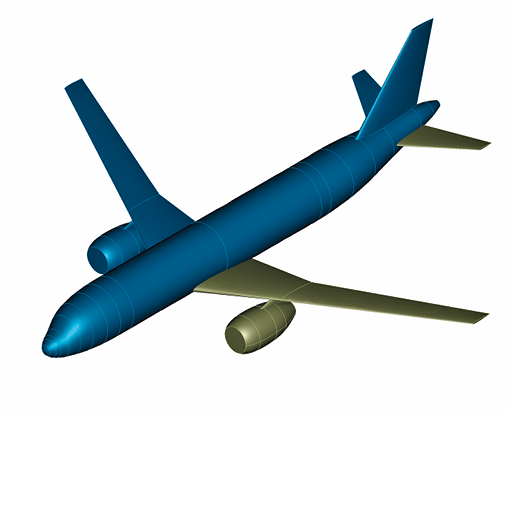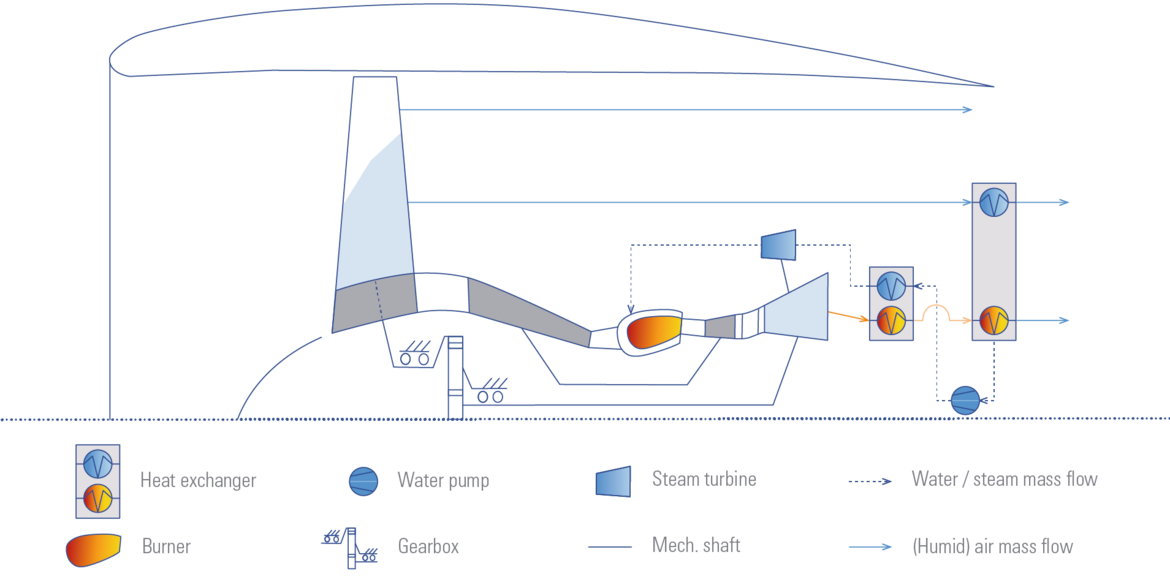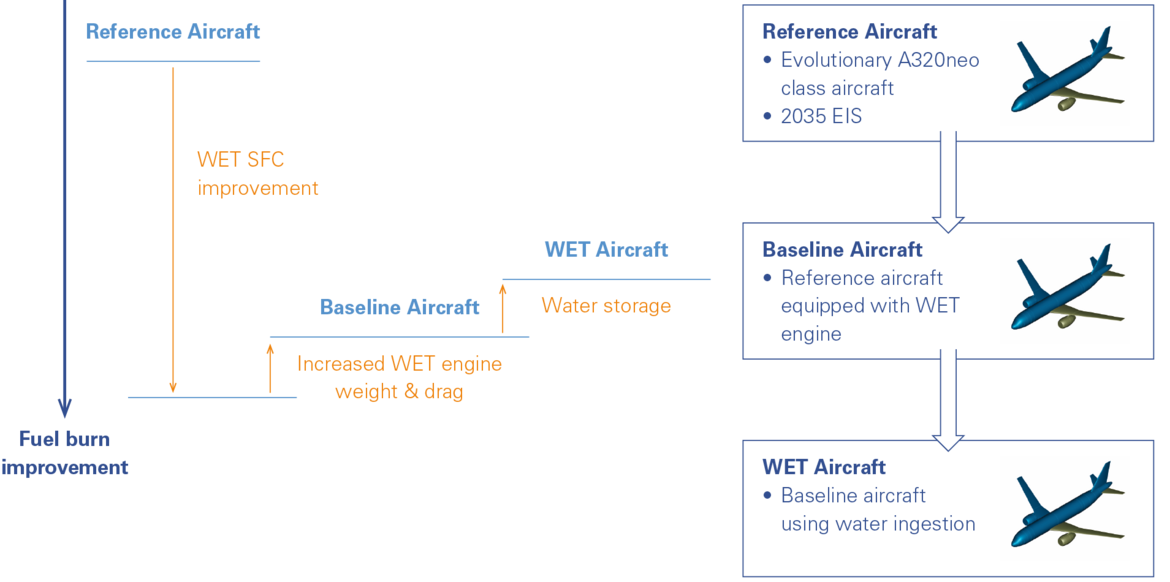
In the research area “Novel Propulsion Concepts”, the water-enhanced turbofan (WET) engine concept is being investigated, which involves the injection and recovery of water into the core stream of a modern geared turbofan. Water is recovered from the exhaust stream by condensation and subsequent liquid separation.
The liquid water is highly pressurised with low energy expenditure, then evaporated and expanded in a steam turbine to the required pressure level for injection into the combustion chamber of the geared turbofan. Steam injection results in a significant reduction in nitrogen oxide emissions. The required heat of vaporisation is taken from the exhaust gas stream, while the heat of condensation is supplied to the bypass stream. This results in an extremely efficient aircraft engine concept with low nitrogen oxide emissions. With increasing efficiency, the volume and weight of the propulsion system increase significantly due to the heat exchangers, which has a crucial influence on the application in the aircraft. In addition, at low altitudes, an external water supply is needed due to the higher ambient temperatures. This necessitates an adapted aircraft design as well as an evaluation of the propulsion concept at aircraft mission level.
This evaluation capability was established at Bauhaus Luftfahrt and applied for a first assessment based on a typical medium-range aircraft application. Further work on optimising the evaluation methodology as well as the aircraft-integrated WET propulsion design is still pending and indicates a potential of 10 % lower fuel consumption.


